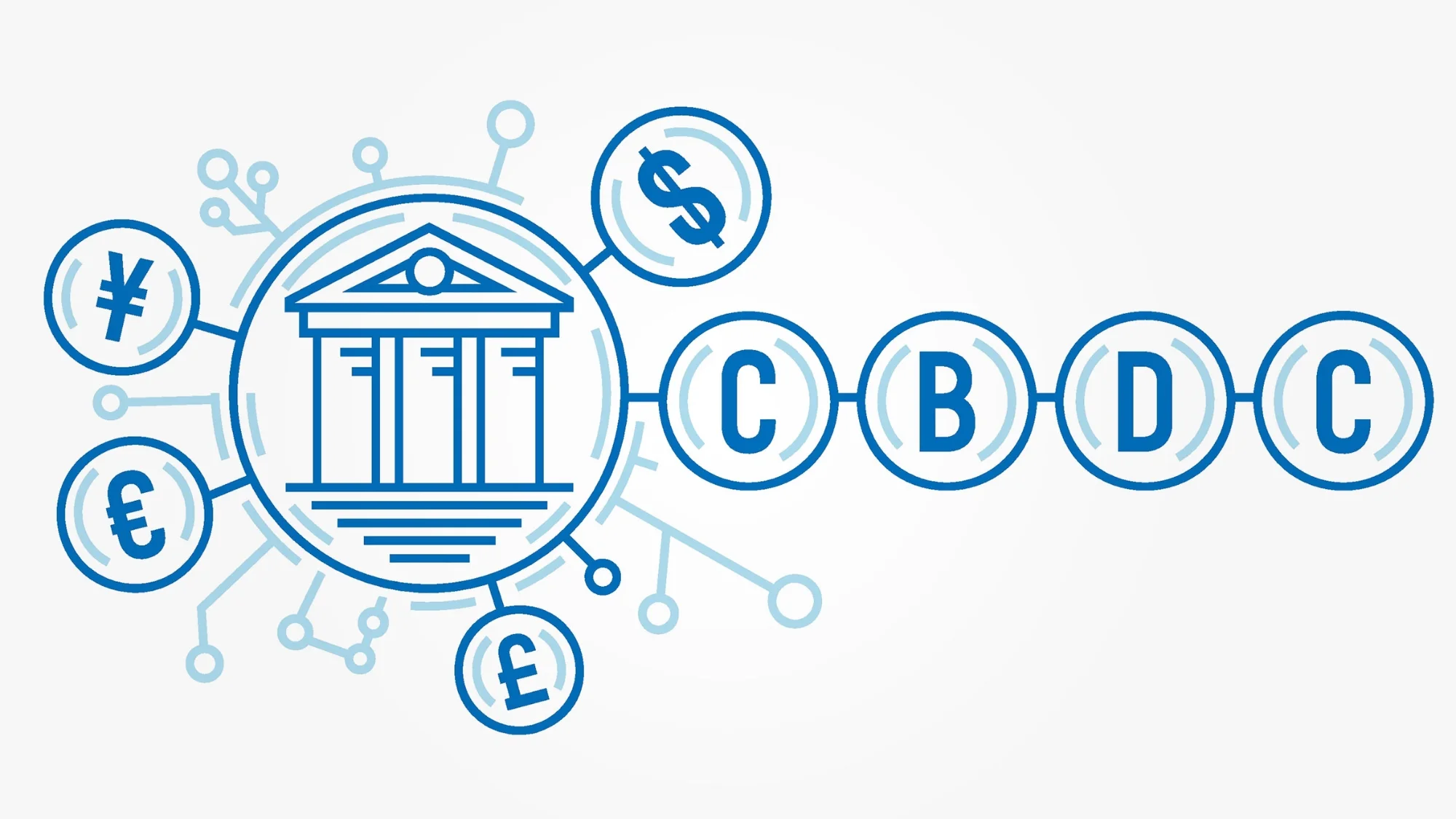Dive into the financial revolution as we explore the Impact of CBDC on traditional banking. Imagine a world where money moves at the speed of light, and paper cash feels like a relic. That’s what Central Bank Digital Currencies (CBDCs) promise to deliver. As someone who’s navigated the twists and turns of finance for years, I’m here to unravel how this digital tide might just redefine the banking landscape we thought we knew. Will towering institutions brace the storm, or will the digital wave sweep them into history? Get the full scoop on how CBDCs are reshaping everything from your daily coffee run to international trade.
Understanding CBDCs and Their Core Functions
The Basic Architecture of Central Bank Digital Currencies
Central Bank Digital Currencies, or CBDCs, are a big deal. They are like digital money that a country’s central bank creates. Think of them as digital bills or coins. But, unlike Bitcoin or Ethereum, they’re official – the government backs them up. This means they are safe and steady, just like the dollars or euros you have in your wallet.
So, how do they work? Well, CBDCs use new tech to move money fast and keep track of it. Banks and people use CBDCs through their computers and phones. This means you can pay for stuff or send money to friends without having paper money. It’s all digital, quick, and secure.
Role of CBDCs in Modern Monetary Systems
Imagine you buy a toy online. Instead of using a credit card, you might pay with digital cash from your bank. This digital cash could be a CBDC. In modern money talk, CBDCs may soon play a huge part. CBDCs make buying things easier and faster for everyone.
For banks and shops, CBDCs can cut costs. They make the process cheap because there are fewer steps to move money around. They also protect your money better, kind of like having a super-strong lock on your piggy bank.
CBDCs could change how we use and think about money. In the future, you might not need a regular bank account – a digital wallet could be enough. This could help people who don’t have bank accounts now. They could get a safe place to keep money and pay bills without the hassle.
Now, will traditional banks swim or sink in this digital wave? They’re working on it. Banks know CBDCs are important, and they don’t want to fall behind. They are trying to fit CBDCs into what they do. Yes, banks might change, but they won’t go away. They’re finding new ways to work with digital money and help you with it.
But let’s not forget, for all this to go well, there need to be clear rules. We need to make sure that CBDCs are safe to use. Banks and governments are talking about this. They want to set up rules that protect you and your money when using digital currencies.
CBDCs are not just a fad. They’re becoming a big part of money and banking. They offer a lot of good things like speed, low cost, and security. As they link up with traditional banking, they could give us a whole new way to deal with money – making life easier for all of us!
The Consequences of CBDC on Traditional Banking
Prediction of CBDCs Impact on Bank Profitability and Revenue Streams
Will CBDCs make banks less money? Yes, they might. CBDC effects on banks could be huge. With Central Bank Digital Currency adoption, banks must change or fade away. Imagine a future where digital currency and financial institutions blend. People might say bye to the old ways.
Getting into detail, CBDC integration in banking targets the same spot that gives banks their money. Right now, banks get fees from moving money. CBDCs can make this cheaper or free. People will love it, but banks need to find new ways to earn.
The relationship between CBDC and commercial banks isn’t simple. Banks fear losing their big role in our money lives. Think of CBDCs as a new player on the team. They might get the ball more. Banks must find new moves to stay in the game.
So, what about Fiat vs Digital Currency? With CBDCs, cash isn’t king anymore. Digital cash can do more. It’s fast and easy to use. CBDC regulations and banking must keep up. We want safety with our easy money, right?
Digital currency transformation might scare some banks. But smart ones will see it as a game to win. They’ll think, “How do we stay helpful for our customers?” More than ever, with retail banking and CBDC, people want quick and easy. Banks that get it right will win.
Adjustments in Lending Practices Post-CBDC Adoption
Now, let’s talk about lending money. CBDC impact on lending will shake things up. Banks often lend money they have. With CBDC, they might have less cash on hand. It’s like having a smaller piggy bank. They’ll have to lend smarter.
Future of banking with CBDC isn’t doom and gloom. Banks might lend more for things that matter, like homes and businesses. They’ll have to be choosy. It’s all about lending to the right people for the right reasons.
People sometimes ask, “Cryptocurrencies vs CBDC, which is safer?” CBDCs have a big team behind them—the government. This means less wild rides in value. It’s one reason why banks might trust it more for lending.
Interbank payments with CBDC can zoom by super fast. This means less waiting for everyone. It’s like sending a text instead of waiting three days for a letter. Faster money moves could help banks give out loans quicker too.
CBDC effect on bank profitability isn’t all bad. Banks will evolve, not just survive. They’ll find new ways to make money and help us all. Innovation is key. And this change, friends, is not just new. It’s exciting!
Central bank digital currency innovation pushes banks to do better. It’s a race to the top. The banks that really care about their customers will use this push to shine. They’ll be the ones we all talk about.
In the CBDC race, there can still be winners. But banks can’t just sit back. They have to jump into the waves of change. They’ll swim by being quick, smart, and always on their toes. Change can be good for all of us. We just have to be brave and ride the digital wave!
CBDC Integration and Operational Challenges for Banking Institutions
Navigating the Implications of CBDC for Bank Customers
CBDCs are shaking up how money moves. They are new, digital forms of a country’s money, made by the central bank. This is a big change, especially for us who like using traditional banks. Banks must now figure out how CBDC fits into their day-to-day. This means making sure both old and new systems work together. People are at the heart of this shift. Banks must help customers get used to digital wallets and online banking. They strive to keep things smooth and safe. Yes, CBDCs may cause some banks to stress. but they also open doors for banks to serve you better.
Addressing CBDC Security Concerns for Financial Institutions
Security is the big talk of town when it comes to CBDCs. Banks have to step up their game. They need to protect against hackers and errors. Losing money in the digital world can happen fast if we’re not careful. That’s why banks work hard to create a safe place for your CBDCs. They look at risks, make plans, and follow rules set by those in charge. Think of it like a vault that’s getting tougher to crack. This ensures when you bank with CBDCs, you can trust it’s as safe as houses.
The Future of Interbank Payments and Cross-Border Transactions
Innovations in Payment Systems: From Traditional to Digital
Gone are the days when sending money was a pain. Remember waiting days for a check to clear? Or handling lots of cash? Now, we zip money across the globe with clicks. This change is huge. It’s all thanks to digital bucks – or what the big brains call “digital currency.”
These online coins don’t jingle in your pocket. They live in computers. Banks and tech folks keep making them smarter. But the coolest thing yet? That’s CBDC – short for Central Bank Digital Currency. The big bosses of money, central banks, have a plan. They want to make their own digital cash. This could change everything!
So, what’s up with CBDCs and banks? They’re like pieces of a puzzle. They must fit right, or the picture’s all wrong. Banks must tweak how they work to make room for CBDCs. Will it be easy? Nope. It’s like learning to ride a bike. But once they get it, it could be super smooth.
You’re probably thinking, what’s in store for us with this CBDC stuff? Imagine sending money to a friend far away. Instead of taking days, it’s there in a flash. No more middle-men slowing things down. This means less time to wait, fewer fees to pay.
Enhancing Global Payments through CBDC: Opportunities and Hurdles
Now, let’s think big – like worldwide big. CBDC can shake up how countries trade and share money. This could make buying stuff from far-off places easier and cheaper. But it’s not all high fives and happy dances. There are bumps on the road.
Here’s one: not everyone trusts new things. It’s like when cars first hit the roads, and folks were unsure. CBDCs are the new kid on the block. Banks, businesses, and everyday folks need to trust CBDCs. Making them as safe as a locked treasure chest is key.
Another thing – rules. You can’t play a game without them, right? Same with CBDCs. Leaders and money experts need to agree on the rules. They’re working hard to write a playbook so everyone wins.
And guess what? Some are already sprinting ahead. Countries are testing CBDCs, seeing how they work. They’re finding out what’s cool and what could go wrong. Every test they run makes all of us closer to having digital cash in our pockets.
So, are banks going to last? You bet! They’re learning to ride the wave. Think of CBDC as their cool new surfboard. Banks will get the hang of it. Yes, it might be bumpy. But playing it smart could mean big wins for banks and us.
The bottom line? Money’s going digital, and things will look different. But if banks and money heads steer this ship right, we could all sail smooth into this rad digital future.
In this post, we’ve explored the exciting world of Central Bank Digital Currencies, or CBDCs. We looked at their design and how they fit into today’s money systems. We saw how these digital dollars might shake up banking, possibly changing how banks make money and lend cash.
But CBDCs aren’t just about new challenges. They’ll also transform how banks work with their customers and keep their money safe. Plus, they can make sending money across borders faster and easier. Sure, there are hurdles to clear, but the promise of a smoother, modern payment world is there.
Think of CBDCs as a fresh wave in finance. They’re poised to refresh the way we think about and use money. It’s a leap forward, and I can’t wait to see where it takes us. Let’s watch this space as the future of money unfolds!
Q&A :
How Will CBDC Affect Traditional Banks?
The introduction of Central Bank Digital Currencies (CBDCs) could significantly impact traditional banking by altering how money is deposited, stored, and transferred. CBDCs may lead to faster and more secure transactions but could also challenge the deposit-taking and loan-making models of traditional banks. This may force banks to innovate and adapt their services to stay competitive.
Can CBDCs Coexist With Traditional Banking Systems?
Yes, CBDCs could coexist with traditional banking systems by offering a digital complement to physical cash. This coexistence would likely involve a period of transition where both systems are used by customers. However, banks will need to adapt their strategies to account for the digital efficiency and potential reduced need for physical branches and cash handling.
What are the Potential Risks of CBDCs to Conventional Banking?
The potential risks of CBDCs to conventional banking include disintermediation, where customers may choose to hold more direct digital currency accounts with central banks, reducing the deposits that traditional banks rely on. Additionally, if central banks offer higher interest rates on CBDCs, it could further draw funds away from savings and deposit accounts at commercial banks, impacting their primary source of funding for loan creation.
How Might Traditional Banks Innovate in Response to CBDCs?
Traditional banks might respond to the rise of CBDCs by developing new financial products and services that leverage the technology behind CBDCs. This could include enhanced digital banking experiences, platforms for seamless integration of CBDC transactions, or new advisory services to help customers navigate the coexistence of digital and traditional currency forms.
Will the Introduction of CBDCs Lead to Better Financial Inclusion?
The introduction of CBDCs has the potential to enhance financial inclusion by providing accessible digital currency options to underserved and unbanked populations. CBDCs could offer an alternative means of transaction and storage of value for individuals who currently lack access to traditional banking services. However, the extent of improvement in financial inclusion will depend on the design and implementation of these digital currencies by central banks.






